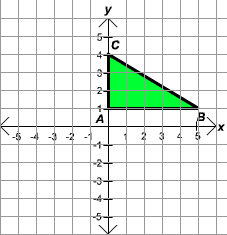figures are congruent.
figure and the image are the same, either both clockwise or both
counterclockwise.

reversed, either clockwise becomes counterclockwise or counterclockwise
becomes clockwise.

Orientation- Refers to the arrangement of points relative to the one another, after a transformation has occured.

Line Reflection (Opposite Isometry)
-Keeps Distance, Angle Measure, & Parrellism.
-Reverse Orientaton
Point Reflection (Direct Isometry)
-Keeps Distance, Angle Measure & Parrellism.
-Same Orientation
Translations(Direct Isometry)
-Keeps Distance, Angle Measure & Parrellism.
-Same Orientation.
Rotations (Direct Isometry)
-Keeps Distance, ANgle Measure & Parrellism.
-Same Orientation.
Diolation(Not Isometry)
-Keeps Angle Meauser & Parrellism.
-Lengths Not Same.
Great! Now Solve The Following Problem:
Which of the following transformations creates a figure that is similar (but not congruent) to the original figure? I. translation II. rotation III. dilation | |
| [1] I only [2] II only [3] III only [4] II and III |




 Rotate the triangle 90 degrees.
Rotate the triangle 90 degrees.  ) that produces an image that is the
) that produces an image that is the 
